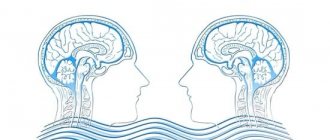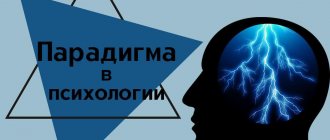Personal identification is a concept in psychology, which is considered as the identification of an individual with another, more significant or whole group, character from a literary work, film, etc. Often, by the word “identification” psychologists mean a defense mechanism in which a person unconsciously becomes like someone who causes fear and anxiety.
Identification in psychology
Identification in psychology
is considered as a natural process, unconscious or only partially conscious. Identification allows you to quickly and successfully adapt to society, promotes personal development and allows you to communicate easily.
As a psychological defense mechanism, identification occurs at an unconscious level. A person resorts to using projections associated with another, significant person. Identification is realized through the attribution of feelings and personal qualities inherent in another person.
Products
For microkiosks For RFID For TSD (data collection terminals)Fundamental information is always stored in shipping documentation. Regarding the party, such distinctive signs will be:
- number of shift, brewing;
- Date of issue;
- shelf life;
- manufacturer's name;
- Product Name;
- OKP code;
- other significant features.
All significant information is duplicated on the surface of the cheese or other food, on the packaging, label or bottom of the can.
Additionally, excise taxes are affixed - special marks that distinguish products that are available for sale only under a license.
History of discovery and study
The concepts of “defense mechanisms” and “identification” were introduced into psychological science by Sigmund Freud. According to his interpretation, identification is:
- a defensive reaction that occurs against the background of fear of punishment for aggressive behavior or sexual attraction;
- unconscious identification of the subject with another against the background of fear of loss of love.
In psychoanalytic teaching, identification is considered as the only mechanism contributing to the formation of personality. Through unconscious identification, the child reproduces the parental image.
In behaviorism, identification is considered as a mechanism for the formation of social roles. It is associated with the need to reinforce secondary needs.
Development mechanism
Identification develops in several stages. The first occurs at the age of about 3 years, when the child begins to understand that he and his mother are not one whole, that another person is vying for the mother’s attention - the father. The child cannot compete with him for his mother, so he needs to develop paternal qualities in himself. This will allow later, already in adulthood, to win a “mother” - a woman who will become a companion.
The second stage of identification development occurs during adolescence. The period of separation is the time when a teenager moves more and more away from his parents and is left alone with the big world. To find external support, he needs another person or group with which to identify.
In the process of identification, a person gains new experience, acquires qualities that later help him determine his own vector of development. With the help of identification, a young child develops personal characteristics and behavioral patterns, and begins to understand his gender identity. Focusing on a meaningful image helps to overcome the feeling of one’s own weakness and inferiority.
Recognition by product range
To classify and distribute products into groups, it is necessary to identify the fundamental characteristics of product units.
To decide on the type of terminals and other equipment you need, contact Cleverence. There are experienced specialists here who will help simplify routine duties and bring order to warehouses, production, and stores.
Structure and functions
Identification occurs gradually. In the structure of the formation of this psychological defense mechanism, the following stages are distinguished:
- a connection arises with an important object on an emotional level, “trying on” the feelings of another person to oneself occurs;
- perception of an important object as oneself - the most striking features of another (an object to be imitated), his style of behavior, manner of speaking, spiritual values, beliefs, life guidelines, interests are integrated into the personality;
- own personal characteristics are assigned to a significant object. Your desires and feelings are attributed to a dear person.
Identification performs an adaptive function - an individual “takes” the traits of another person (or group) in order to be like him, to feel that he belongs to a clan.
Identification is a means that helps you immerse yourself in the world of another person, understand his thoughts and feelings.
Identification through labeling
This includes affixing distinctive signs that will distinguish a batch, variety or subspecies. First, the group to which each unit belongs is determined; this is also stated in regulatory documents indicating the type of designation.
All positions are marked with a specific factor, inscription or number. This allows you to identify packaging or certain properties of an item.
Kinds
According to the psychoanalytic approach, a person can form a positive or negative identification. In the first case, the object is the one towards which the subject experiences predominantly positively colored emotions.
In the case when negative self-identification occurs, the object whose characteristics are assigned by the subject is viewed as an aggressor, a person who causes fear and anxiety.
There is also primary and secondary identification. The primary one is formed during the interaction of a person at an early age with a parent of the same sex. For a girl, the mother becomes the object, for a boy, the father becomes the object.
Secondary identification is formed on the basis of the child’s interaction with other people who are present nearby.
Several other subtypes of identification are considered in psychology.
Situational
In adults, this type of identification is updated when interacting with other, more significant adults, for example, during work meetings with subordinates or when meeting a new person. Children use this defense mechanism when playing together with peers in order to become like them. The function of this type of identification is to be as similar as possible to the currently significant person.
Group
This type of psychological defense is considered very stable. It is characterized by the fact that a person shares the moral values, views and foundations of the reference group, being in it and outside it.
In some cases, group identification appears only in certain situations - when a person is within a group. If he is outside the group, his views and behavior change, and his own prevail.
Cultural
Identification occurs through identification with the culture of a particular society. A person is well aware of his own potential and accepts the requirements of the society of which he is a part.
Social
A person realizes that he is an important element of society. He believes that his belonging to a certain group is very important, that he can represent values and protect the interests of the community.
Personal
A person identifies himself only with himself. He is aware of his own uniqueness and is not afraid to demonstrate it. This type of identification differs from others in that a person has a single system of views, beliefs, goals and interests. An individual’s belonging to any social group does not cancel his stable ideas about himself and does not change the set of his personal characteristics.
Collectivist
A defense mechanism is formed in a team member. When colleagues engage in joint activities, they transfer emotions to each other. Gradually, a common emotional background, mutual assistance, and sympathy are formed in the team. Participants in the collective process try to help their colleagues, share the joy of the successes achieved and the hardships associated with each other’s failures
Sexual
Formed in the first years of life. At the age of 2-3 years, the baby begins to show interest in his own body and associate himself with a certain gender.
Gender
It manifests itself through awareness of gender (it is not always identical to gender). Gender identification allows a person to understand who he feels like (a woman or a man).
Products
For 1C:EnterpriseFor SAP R/3For Microsoft DynamicsFunctions
Among the diversity there are 4 main ones:
- Pointing. With its help, any sample is compared with a standard by variety, name, brand, type.
- Informational. Its goal is to bring information to everyone who is interested in it.
- Confirming. Monitors product compliance with labeling and data in accompanying documentation. With its help, you can determine whether the item is genuine in front of the consumer or inspector.
- Manager. The main element of quality control.
Stages
The first stage of identification formation, which occurs at an early age, is very important for personality development. Not only S. Freud, but also other classical psychologists insisted on this. In the first years of life, identification occurs under conditions of high emotional load, but it also becomes a necessary condition for further alienation and the formation of one’s own ideas about oneself as a person.
In the process of differentiation by the child of himself and isolation from others, his independence grows, he begins to better understand himself as a source of activity. The child learns to act differently from others.
Jung believed that identification is necessary for the development of personality at a stage when there is no individual path yet. As soon as the opportunity arises to follow the path of individual development, identification turns from a factor stimulating development into an obstacle to it. Identification at the stage when a person must take his own path provokes dissociation and prevents him from gaining integrity. Jung believed that identification is a very important stage that precedes individuation.
As a person matures, the importance of identification decreases, while alienation, on the contrary, increases and reaches its maximum level in adulthood. The exception is during periods when a person goes through an identity crisis.
Ready-made solutions for all areas
Stores
Mobility, accuracy and speed of counting goods on the sales floor and in the warehouse will allow you not to lose days of sales during inventory and when receiving goods.
To learn more
Warehouses
Speed up your warehouse employees' work with mobile automation. Eliminate errors in receiving, shipping, inventory and movement of goods forever.
To learn more
Marking
Mandatory labeling of goods is an opportunity for each organization to 100% exclude the acceptance of counterfeit goods into its warehouse and track the supply chain from the manufacturer.
To learn more
E-commerce
Speed, accuracy of acceptance and shipment of goods in the warehouse is the cornerstone in the E-commerce business. Start using modern, more efficient mobile tools.
To learn more
Institutions
Increase the accuracy of accounting for the organization’s property, the level of control over the safety and movement of each item. Mobile accounting will reduce the likelihood of theft and natural losses.
To learn more
Production
Increase the efficiency of your manufacturing enterprise by introducing mobile automation for inventory accounting.
To learn more
RFID
The first ready-made solution in Russia for tracking goods using RFID tags at each stage of the supply chain.
To learn more
EGAIS
Eliminate errors in comparing and reading excise duty stamps for alcoholic beverages using mobile accounting tools.
To learn more
Certification for partners
Obtaining certified Cleverence partner status will allow your company to reach a new level of problem solving at your clients’ enterprises.
To learn more
Inventory
Use modern mobile tools to carry out product inventory. Increase the speed and accuracy of your business process.
To learn more
Mobile automation
Use modern mobile tools to account for goods and fixed assets in your enterprise. Completely abandon accounting “on paper”.
Learn more Show all automation solutions
For warehouse For store For institutionConsumers contribute to the identification and recognition of products by assortment. Their response allows us to remove low-quality products from the market.
High-quality sorting helps to distribute by grade, identify defective samples and remove them from circulation. A separate type of process rejects products for certain characteristics - genetically modified, with excess sugar, or others.
Identity determination is mainly carried out visually - the appearance and the photograph in the passport are checked.
Methods
Experimental methods of research in most cases focus on specific aspects - social roles, gender or group affiliation, personality characteristics. Such studies make it possible to identify the peculiarities of living certain identities and searching for a significant object for identification in different situations and areas of activity.
Difficulties arise when it is necessary to study not specific characteristics, but to form a holistic picture of the personality and its identity.
In order to explore the widest possible range of manifestations of identity, to understand with whom, with what and to what extent a person identifies himself, several diagnostic directions are used:
- Questionnaires to identify the level of attitude towards oneself and self-satisfaction. They are easy to use, easy to standardize and validate on a representative sample. Limitations to obtaining objective survey results may include cognitive biases related to self-perception, as well as socially desirable responses.
- Psychosemantic research methods - in them, the assessment of one’s own personality is considered through compliance with a certain set of criteria, which are not always socially approved.
- Projective techniques - they provide an opportunity to explore identity and self-awareness.










